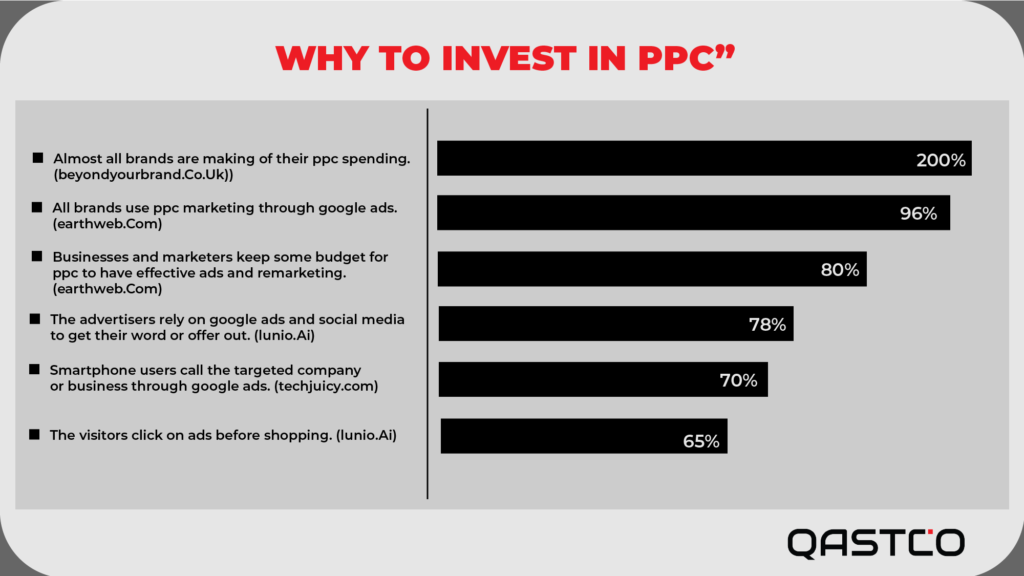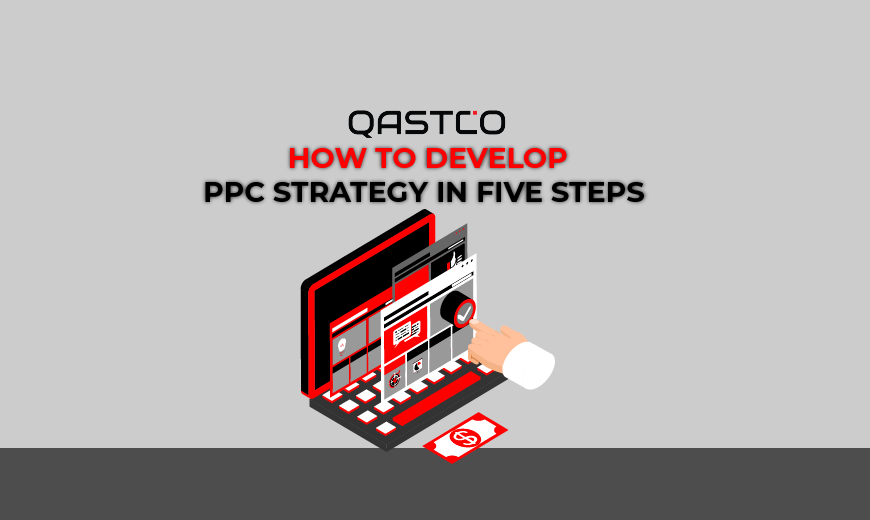Pay-Per-Click (PPC) advertising stands out as a formidable weapon in the arsenal of digital marketers. However, harnessing the full potential of PPC requires more than just bidding on keywords and creating eye-catching ads. Crafting a successful PPC strategy demands a thoughtful and systematic approach. In this blog, we will embark on a journey to uncover the intricacies of PPC strategy development, breaking down the process into five crucial steps.
Just like with any other advertisement, businesses should create the objectives and determine the desired results from the marketing budget. In PPC, Brand awareness, lead generation, sales, App Download, and retargeting sales campaigns are among the most popular objectives.
What is PPC?
Before discussing a successful PPC strategy, it is vital to understand what PPC is. In digital marketing, PPC is the model of paid marketing in which Business as the advertiser pays for each click made on Ad. This model makes it effective as businesses have to only pay when the ad is clicked. If there is a good PPC strategy, it help business to get very good margins on each click.
As small businesses can have PPC ads in various formats. It can be an image, text, video, or a combination of all. Businesses can advertise them on websites, search engines, as well as on social media platforms.
Why to Invest in PPC?
- Brands are making almost 200% of their PPC spending. (beyondyourbrand.co.uk)
- 96% of all brands use PPC marketing through Google ads. (earthweb.com)
- 80% of businesses and marketers keep some budget for PPC to have effective ads and remarketing. (earthweb.com)
- 78% of the advertisers rely on Google ads and social media to get their word or offer out. (lunio.ai)
- 70% of smartphone users call the targeted company or business through Google ads. (techjuicy.com)
- 65% of the visitors click on ads before shopping. (lunio.ai)

PPC Strategy Basic Five Steps
Let’s Discuss about the five crucial steps of developing a Successful PPC Strategy.
Develop and Define your Goals
Businesses need to develop smart goals to make their PPC strategy successful. As a small business you must be looking to acheive some objective, there will be an intended action to be expected from the buyers or the consumer of your product or service.

For small businesses with limited budget, it is not ideal that the ad is being clicked randomly. So to make the PPC campaign right, make the goals clear. Generally, PPC is used by businesses to achieve the following goals.
- To increase the traffic to the site
- To increase the sales of products or services
- To generate leads
- To increase brand awareness
Targeting the Right Audience
Audience is some specific group of people, who are most likely the customers or consumers of businesses product or service. As small businesses know their audience because targeting a small niche is easy and profitable. And Small Businesses can develop their PPC strategy accordingly.
Looking into the Audience
Businesses should identify their target audience based on some elements related to the product or service they are providing. Some important elements for targeting an audience are age, economic class, geographical area, education, gender, careers, values, and behaviour for shopping.
Based on these elements businesses get data, and analyse it where it matches and have connection with the product or service they are offering. This connection tells whether there is a need for their product or service. Aligned with that, PPC strategy is carved.
Businesses need to target the right audience to make their PPC campaign strategy successful. The right person will click on the ad and then this click will turn into a sale or other intended action. In Google Ads, businesses can find and target their audience by using the keywords that people are searching for.
After getting the keywords right (related) to execute a successful PPC campaign. Keywords will hit the right audience, who will then click and go for intended action.
Optimising your Landing Pages
The landing page is the page where a person who clicks on an ad will land. Here the landing should be optimal according to the intended action you want from the person. The message in the ad and on the landing page should be synchronised, so that the click can be converted into a sale, or intended action and may fulfil the purpose of the campaign.
As a service provider, get your landing page designed according to the message you are going to deliver in the PPC campaign. Don’t keep it generic. Make it catchy. It should be able to attract and grab the visitor’s attention.
Creating Ads for PPC Campaign
Now, you have got and defined the audience, you have to create ads for that audience. But before creating ads, do have a keen look at the competitors. What they are doing. In this way, your business would be able to get ROI from a good ad in PPC campaign strategy.
Choosing Google Ads Format
There are many ad formats offered by google ads for businesses. As a small business, businesses can choose text, image or video ad format according to their need. Also, there is a responsive ad format which can be adjusted on many different platforms according to size and space.
Then there is shopping ad format, businesses can drive sales using shopping ad format. Also, there is app promotion ad format which can drive the app usage of business. Businesses can use call-only ad format to get the customers connected directly. These ads appear on devices which can call.
Google Ads Designs & Layout
While designing the ad, start with selecting the template. Adjust the design elements in the template. Designing the layout is a key component of PPC strategy.
Moreover, during creating ads, keep your URL visible. Make it catchy and give a good, complete, and crisp description which should be compelled to click the ad. Service providers can use texts, images, videos, or all of them.
Optimise and Analyse your PPC ADS Campaign Strategy
After launching an Ad campaign. Now it’s time to sit and watch. How your PPC strategy is working. Once after getting the initial results of the campaign, there will be some potential to improve the campaign which is called campaign optimisation.

PPC campaign optimisation is a continuous process. you have to keep adjusting, analysing, and optimising. In this way, you will be able to execute a successful PPC campaign. There are ways through which businesses can optimise the PPC campaign, like by having KPIs or observing competitors etc.
Some of the KPIs (Key Performance Indicators) in PPC are
- Click through Rate: How much relevant your content is to your targeted searches.
- Conversion Rate: How much money, clicks, or impressions are used in converting a click into an intended action.
- Cost per Click: It is the cost you are going to pay for one click.
Final Thought
As we conclude this exploration into the art of PPC strategy development, it’s essential to recognize that the digital landscape is ever-changing, and adaptability is key to sustained success. Armed with the knowledge gained from our five-step guide, you now have the tools to navigate the complexities of PPC advertising with confidence and finesse. Remember, the effectiveness of your strategy is not solely determined by its initial implementation; ongoing analysis, optimization, and a commitment to staying informed about industry trends are equally crucial.
Consider hiring a PPC agency to give your strategy a boost:
PPC advertising does require careful planning and consistent monitoring to be successful. If you have a small staff that already wears many hats, it might be worth your time and money to outsource your PPC marketing to QASTCO.
By outsourcing to our agency, you can work with people who specialise in PPC advertising and SEO services, gain access to better tools, reduce risk, and get actionable feedback from a professional.


Leave a Reply
You must be logged in to post a comment.